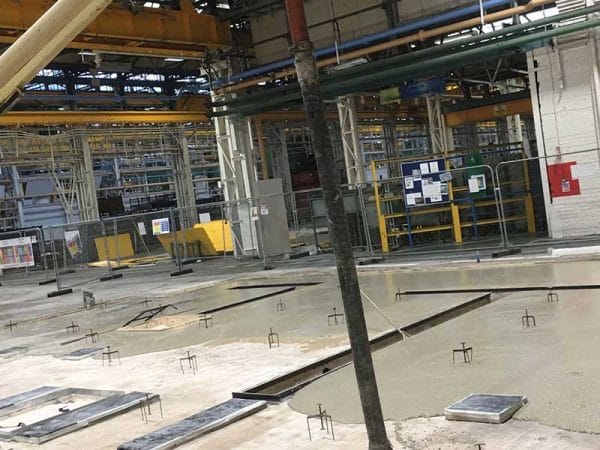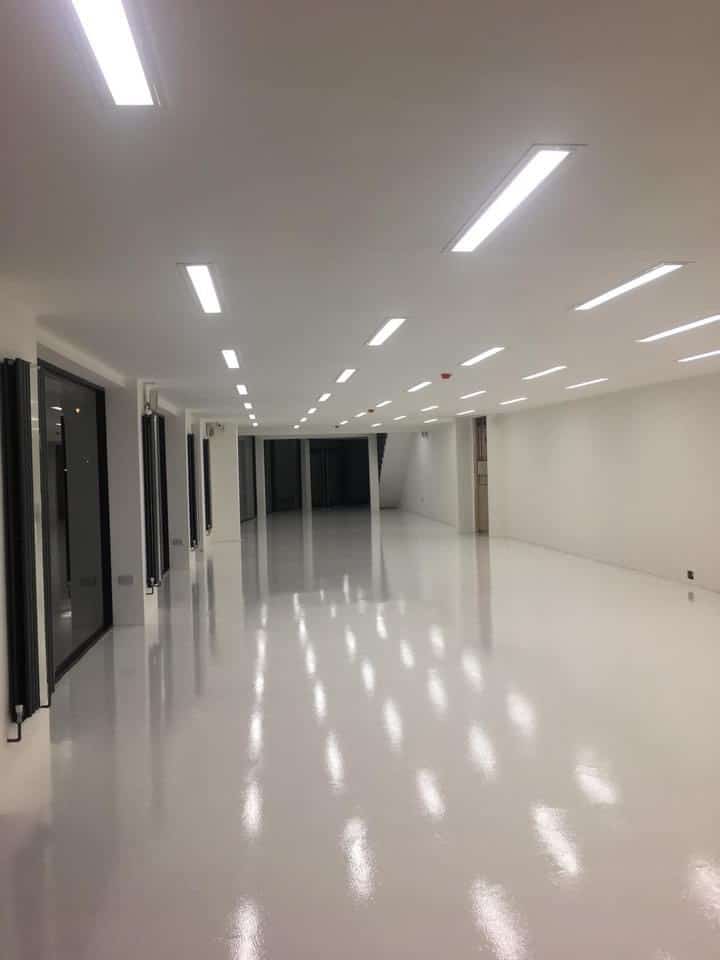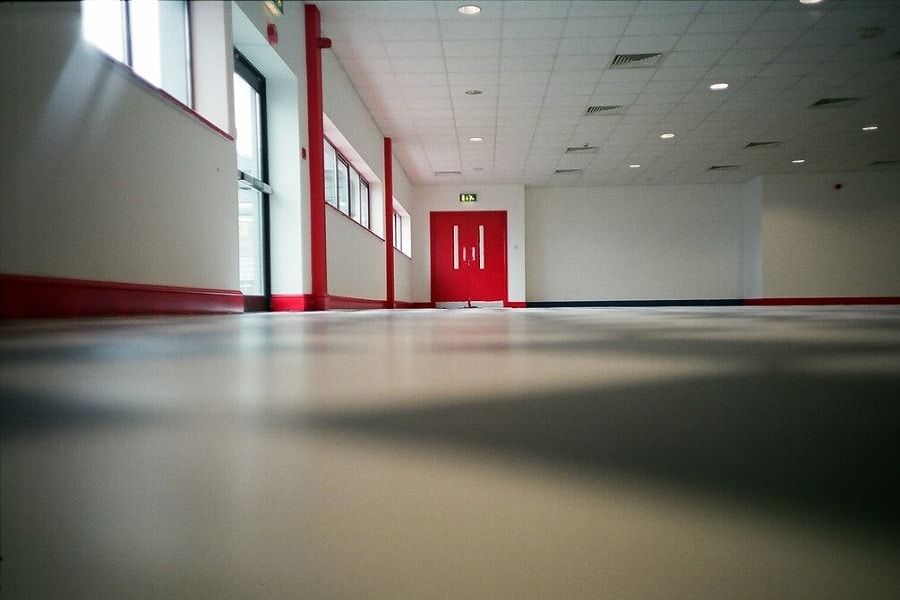Screed Drying Time
Understanding screed drying time, whether you’re a contractor, builder or homeowner can be what helps turn your projects around to be more successful. Learning about this crucial element can make a massive difference to your work and leave you with a final result you’ll be proud of.

What is the importance of understanding screen drying time
Industrial floor screeds are a crucial component in constructing robust and durable flooring systems for commercial and industrial spaces. These specialized materials, typically made of cement, are applied directly to the concrete subfloor. The primary purpose of an industrial floor screed is to create a smooth, level, and highly durable surface, providing a solid foundation for various flooring finishes.
Unlike standard concrete, industrial floor screeds are meticulously prepared and laid to achieve a superior level of flatness and smoothness. They offer several key benefits that make them indispensable in industrial and commercial settings.

The crucial component in flooring construction, the screed, requires special consideration during the drying process. Following the most effective screed drying time doesn’t just shorten the time it takes to complete the job it also:
- Prevents Cracks: Sufficient screed drying time reduces the possibility of cracks compromising the flooring's structural integrity. Drying too quickly might cause shrinkage, which can result in unattractive and troublesome cracks.
- Attaining Even Surfaces: A completely level surface is acquired after an effective screed drying time. An uneven base could be the consequence of partial or uneven drying, which would then cause unevenness in the finished flooring material.
- Improves Adhesion: Proper adhesion between the screed and the ensuing layers is made possible by adequate screed drying time, which guarantees a solid bond. Insufficient drying could impede the adherence, causing the flooring material to flake or come away.
What Factors Affect Screed Drying Time?
Understanding the factors that affect screed drying time helps manage and control the drying process effectively, ensuring a successful flooring installation with optimal drying times and quality outcomes. Some of these factors include:
The surrounding environment
- Temperature: The drying process normally proceeds more quickly in warmer climates, but it can also be considerably slowed down in colder ones.
- Humidity: Since moisture evaporates more quickly at lower humidity levels, drying times are accelerated. Excessive humidity can make drying take longer.
- External elements: rain, direct sunlight, or harsh weather conditions can have a substantial impact on drying times and may require process changes.
Screed Density:

In comparison to thinner layers, having a thicker density causes the screed drying time to increase. The amount of time needed for moisture to escape the screed's surface and between its layers depends directly on its depth.
Accelerators and Additives:
To hasten the drying process, several accelerators and additives can be included with the screed. They must be used following manufacturer instructions, though, as their efficacy varies depending on several conditions.
These are just a few examples of factors that can influence the screed drying time. To discover other frequently asked questions around screed:
Depending on the type of screed you choose or require will determine its drying time. Most screeds are normally adequate to walk on after 48 hours at most however some can be walked on within a day and with added additives can be walked on after 12 hours.
It is recommended to leave a screed 28 days before placing furniture on it, however, flooring and some furniture can be placed on the screed after 7 days if completely necessary.
For more information, please visit this page.
There is a type of floor screed for essentially any property. Whether you want to screed your commercial, domestic or industrial property there is a screed that can be applied. This is because screeds can be adapted to suit the environment they will be in, i.e. screeds can be made to withstand more heavy duty loads if required.
Just like the curing time, the type of floor screed chosen will depend on the thickness it needs to be.
For industrial and commercial spaces with heavy duty applications, the floor screed will need to me considerably thicker than one in a domestic property.
However, it is best to ask your builder the thickness needed to be completely accurate.
Screed and concrete are both made up of the same materials, however, screeds use a finer aggregate, therefore, making the material overall smoother. This make concretes stronger as the extra aggregate adds more strength however as a screed is made to be put over concrete the strength is still maintained.
Are there ways to increase the screed drying time?
By combining these methods and customising them to the particular needs of the project, it is possible to drastically cut down on screed drying time without sacrificing quality or guaranteeing a successful flooring installation.
- Low-Water Content Blend: Select a screed mix that has less water. A drier mixture causes the moisture to evaporate more quickly, hastening the screed drying time.
- Managed Setting: Manage humidity and temperature to keep the atmosphere under control. To generate the proper drying conditions, this might be accomplished by temporarily enclosing the area or sealing it off.
- The use of forced ventilation: By accelerating air circulation and evaporation, fans and dehumidifiers can hasten the drying process of the screed. In places that are small or have little ventilation, this technique is especially helpful.
By combining these methods and customising them to the particular needs of the project, it is possible to drastically cut down on screed drying time without sacrificing quality or guaranteeing a successful flooring installation.
- Low-Water Content Blend: Select a screed mix that has less water. A drier mixture causes the moisture to evaporate more quickly, hastening the screed drying time.
- Managed Setting: Manage humidity and temperature to keep the atmosphere under control. To generate the proper drying conditions, this might be accomplished by temporarily enclosing the area or sealing it off.
- The use of forced ventilation: By accelerating air circulation and evaporation, fans and dehumidifiers can hasten the drying process of the screed. In places that are small or have little ventilation, this technique is especially helpful.
How long is screed drying time usually?
The screed drying time will depend on the kind you select or need. The majority of screeds are typically suitable for walking on after 48 hours at most, although others can be walked on in a day or, with additional additives, in just 12 hours.
Although it is advised to wait 28 days before putting furniture on a screed, if absolutely required, flooring and certain furniture can be put on the screed after just 7 days.
It's crucial to remember that the screed may still contain moisture in its lower layers even though it may seem dry on the surface. As a result, it's crucial to do moisture testing before laying flooring materials to make sure the screed has sufficiently dried following manufacturer and industry guidelines.
If you want to learn more or have any questions about screed drying time contact us today:
Contact Form
Address: Unit 2 Ranton Park, Martindale, Hawks Green, Cannock, Staffordshire, WS11 7XL
Email: info@gmfloorscreeds.com
Landline: 01543 572 177

